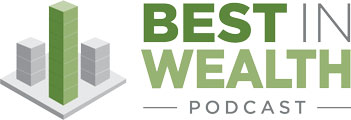016 – Top 10 Year-End Tax Planning Tips
To help you finish out 2015 with a flourish, here’s a list of top 10 year-end financial to dos.
1. Max out retirement contributions
Make sure you’re on target for retirement—and save on taxes, too—by contributing the maximum to your tax-advantaged retirement accounts, whether you have an IRA, a 401(k) or both. For 2015, you can contribute $5,500 to a traditional IRA, plus a $1,000 catch-up contribution if you’re 50 or older. Hopefully, you’re already contributing enough to your 401(k) to capture any company match. If you can do more, you can contribute up to $18,000, plus a $6,000 catch up for 50-plusers. Even if you have a Roth IRA or Roth 401(k) with no upfront tax deduction, max out your contributions. It’s a yearly opportunity you don’t want to give up.
2. Take advantage of an HSA
If you have a health savings account (HSA) tied to your high-deductible health insurance plan, now’s the time to max it out. An HSA lets you make tax-deductible contributions that you can later withdraw tax-free for qualified medical expenses. HSA contribution limits for 2015 are $3,350 for singles, $6,650 for a family, with a $1,000 catch-up for age 55 and up. And if you’re lucky enough not to need the money immediately, you can save it for future use.
3. Harvest capital losses to balance gains
As you consider your year-end portfolio rebalancing, see if it makes sense to take some capital losses to cancel out capital gains. Not only will it save you money on capital gains taxes, it will give you the chance to clear out some of the losers, reset your asset allocation, and reinvest in areas that you think may have more potential for gain.
4. Prepay where possible
If you have the means, prepaying things such as property taxes, medical bills or estimated state taxes can give you added deductions to further reduce your taxable income.
5. Use—don’t lose—the money in your Flexible Savings Account (FSA)
Unlike an HSA, with an FSA you generally have to use the money you put into it during the calendar year or lose it. While new rules allow an employer to let you carry over $500 or give you an extra two and a half months to use the funds, it’s not required. Either way, now’s the time to check the balance in your FSA and put those funds to work.
6. Take your required minimum distribution (RMD)
This won’t save you on taxes, but it will save you a hefty penalty. You must take RMDs from traditional IRAs and 401(k)s by December 31. The only exception is your very first RMD, which you can delay until April 1of the year following the year you turn 70½. This isn’t to be treated lightly. Miss the deadline and the penalty is 50 percent of the amount that should have been withdrawn.
7. Get a jump on tuition
Will you be facing a big college tuition bill this spring? If you can pay it before the end of the year, you might be able to ease the pain a bit with up to a $4,000 tax deduction. There are income limits ($80,000 for single filers/$160,000 for married filing jointly; not available if married filing separately), but if it works for you, it’s worth considering.
8. Give your health insurance a checkup
Make sure you have the most complete and cost-effective coverage available. Open enrollment for 2016 coverage on the Health Insurance Marketplace is from November 1, 2015 to January 31, 2016, so now’s the time to do some comparison-shopping.
9. Make tax-free gifts
If you can afford to be generous, Uncle Sam makes it even easier to give gifts to special people on your list. In 2015, you can give up to $14,000 each to any number of individuals with no gift tax or reporting requirements. And there’s no tax for the recipient.
10. Be charitable
Giving to charity not only feels good, it has tax advantages as well. Consider opening a Charitable Gift Account (also called a donor advised fund) and get an upfront tax deduction for your charitable contribution. If you fund your account with appreciated stock, you’ll get the added advantage of avoiding capital gains taxes while getting a tax deduction for the full market value of the donated stock.
Via: Carrie Schwab-Pomerantz,
CFP®, President, Charles Schwab Foundation; Senior Vice President, Schwab Community Services, Charles Schwab & Co., Inc.



